Last time, I wrote about the city of Cairns in Australia’s far north; this time I’ll explore the coastal region north of the city, including the Daintree National Park. I thought this region was worth a second blog because you wouldn’t come all this way just to see one small city (although you could combine the trip with a visit to Brisbane or Sydney, but that’s another story).
Anyway, tropical North Queensland as a whole ranks as a standalone destination and, as an aside, it is the only region with two distinct Indigenous cultures – the Aboriginal and the Torres Strait Islander peoples. The Aboriginal people have historically lived on mainland Australia and archaeological evidence suggests it is the oldest continuous civilisation on earth, extending back over 65,000 years.
Torres Strait Islander peoples come from the islands of the same name, located in the waters between the tip of Cape York and the south coast of Papua New Guinea. As the islands form part of Queensland, it is useful to know something of the Torres Strait Islanders’ history and culture, when in this part of Australia. The people are of Melanesian origin with their own distinct identity, history and cultural traditions. They also have their own languages, the most common of which is Torres Strait Creole. They are known for their strong affinity with the sea.
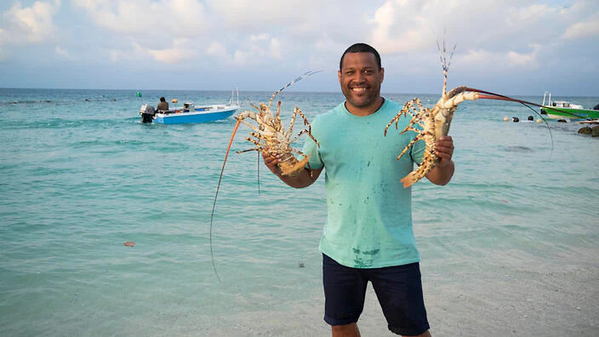 Torres Strait Islander TV producer, Aaron Fa’aoso. Photo: NITV
Torres Strait Islander TV producer, Aaron Fa’aoso. Photo: NITV
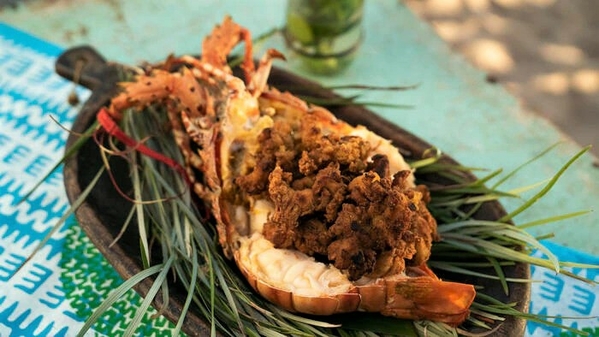 Typical Torres Strait Islands cuisine. Photo: NITV
Typical Torres Strait Islands cuisine. Photo: NITV
It’s worth spending a few days in Cairns to soak up the atmosphere before heading north. Visitors arriving at Cairns International Airport have a wide choice of accommodation available to them ranging from budget motels to self-catering apartments to 5-star hotels, including three in the Crystalbrook Collection – Bailey, Flynn and Riley.
While in the city, visit the Cairns Art Gallery at 40 Abbott Street. Housed in a delightful 1936 building, the gallery regularly hosts interesting local and international exhibitions.
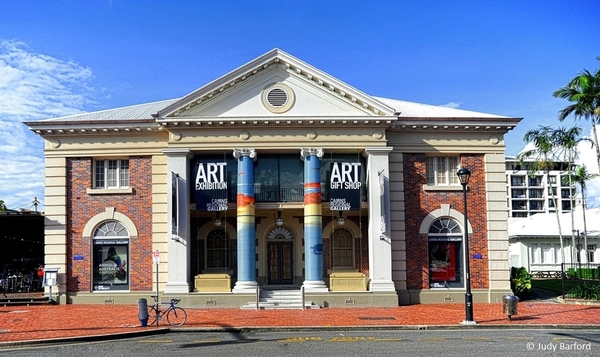 For example, right now until August it is showing The Past in the Present – Indigenous North Australian and Asia-Pacific art, and Beating Hearts – American Indian new media. The latter explores the video works of three acclaimed artists – Michelle Derosier, an Anishinaabe artist from north-western Ontario; Jeffrey Gibson, a contemporary American artist of Choctaw-Cherokee heritage; and Terrance Houle, a member of the Blood Tribe in Southern Alberta.
For example, right now until August it is showing The Past in the Present – Indigenous North Australian and Asia-Pacific art, and Beating Hearts – American Indian new media. The latter explores the video works of three acclaimed artists – Michelle Derosier, an Anishinaabe artist from north-western Ontario; Jeffrey Gibson, a contemporary American artist of Choctaw-Cherokee heritage; and Terrance Houle, a member of the Blood Tribe in Southern Alberta.
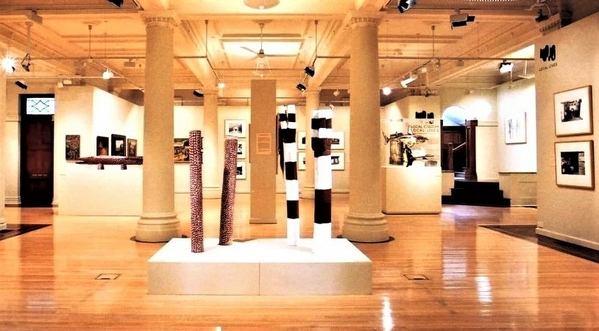
North to the Daintree
Time to hit the road and you can get to all the places featured with a series of tours, but by far the best way is to self-drive, giving you the freedom to travel where and when you please. Get a four-wheel-drive vehicle if you can, but if you only have a regular car and want to travel to Cooktown and beyond, you’ll need to divert inland at some point. I’ll explain why later.
Driving north from Cairns on the Captain Cook Highway, your first stop after about an hour should be the pretty town of Port Douglas.
Fronting the Coral Sea and with the popular Four Mile Beach curving away to the south, Port Douglas is an alternative to Cairns as a base for visits to both the Great Barrier Reef and the Daintree Rainforest. In town, Macrossan Street is lined with boutique shops and restaurants.
You may wish to spend a night at Port Douglas before driving north-west for another 20 minutes or so to Mossman Gorge. This is where the rainforest starts and it’s worth taking one of the many walks in the area. See the bubbling crystal-clear waters of the Mossman River and numerous waterholes along the way.
Accommodation is varied on this itinerary and camping is popular, but don’t run away with the idea that you have to rough it. There are some luxury beach and rainforest resorts that will take your breath away. I’ve stayed at this one, silkyoakslodge.com.au currently under renovation but set to reopen later this year. However, these tropical destinations are very popular with Australians during our winter (June to August) and some properties are fully booked up to a year ahead.
Next, take the Mossman-Daintree Road and drive for half an hour until you reach Daintree Village. From here you can explore the Daintree River and see more of the rainforest – believed to be one of the three oldest in the world – all part of the Daintree National Park. 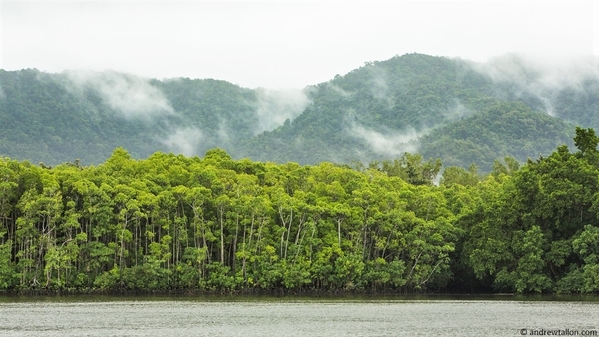 The Eastern Kuku Yalanji Aboriginal people are the traditional owners of Daintree National Park, and their country extends from Mossman north to Cooktown.
The Eastern Kuku Yalanji Aboriginal people are the traditional owners of Daintree National Park, and their country extends from Mossman north to Cooktown.
The park is rich with tropical wildlife including the estuarine crocodile and the southern cassowary (pictured below), both of which should be avoided because of their potential to inflict harm.
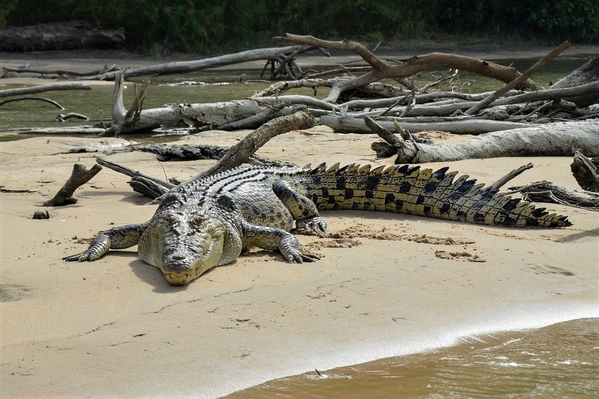
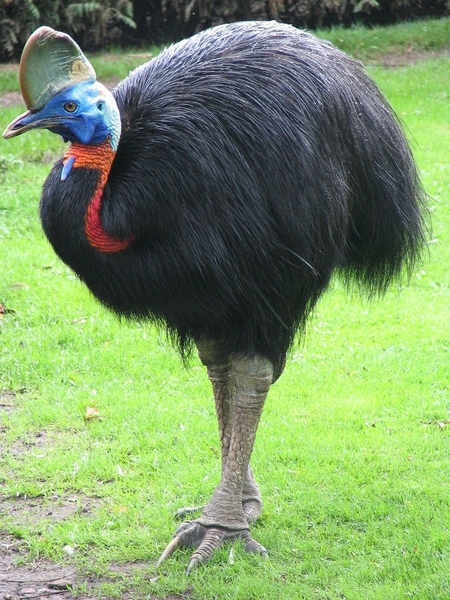
To continue north to Cape Tribulation you have to cross the Daintree River using the local cable ferry.
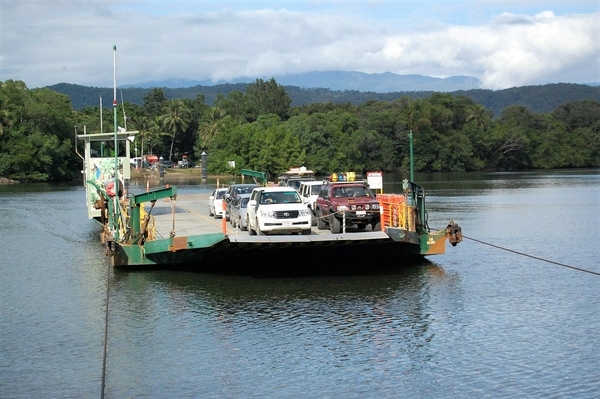 It operates daily between 5am and midnight, takes five minutes to cross (but allow 15 minutes for the wait) and carries a maximum of 27 vehicles. It costs $23.00 one way with your car or $39.00 return. Once across it’s about an hour’s drive to your next destination.
It operates daily between 5am and midnight, takes five minutes to cross (but allow 15 minutes for the wait) and carries a maximum of 27 vehicles. It costs $23.00 one way with your car or $39.00 return. Once across it’s about an hour’s drive to your next destination.
Cape Tribulation 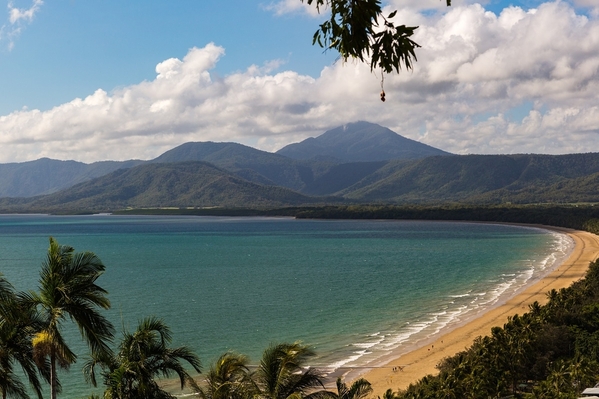 One of the most biologically diverse areas in the world, Cape Tribulation was included in the Wet Tropics World Heritage listing in 1988.
One of the most biologically diverse areas in the world, Cape Tribulation was included in the Wet Tropics World Heritage listing in 1988.
Known as the place where the rainforest meets the reef, you can board a fast boat here to explore the Great Barrier Reef, take a kayak to nearby islands, bushwalk and camp. The strangler fig tree (below) is a feature of this region.
If you decide that you want to go on to Cooktown, note that the bitumen road ends at Cape Tribulation and the only way forward is along the gravel Bloomfield Track, about 100 km.
 The track is not for the faint-hearted and if you only have a regular sedan, don’t attempt it. Rental car companies will most likely prohibit it anyway. The track is subject to seasonal flooding, slips, potholes and fallen trees. I once drove the track in an ordinary car without incident, but it was the dry season and I was lucky … and it was a company car, not my own!
The track is not for the faint-hearted and if you only have a regular sedan, don’t attempt it. Rental car companies will most likely prohibit it anyway. The track is subject to seasonal flooding, slips, potholes and fallen trees. I once drove the track in an ordinary car without incident, but it was the dry season and I was lucky … and it was a company car, not my own!
To reach Cooktown by sealed road you have to go inland by backtracking almost to Port Douglas, then taking Highway 44 to Mount Molloy, Highway 81 to Lakeland and Highway 40 to Cooktown, a total of 350 km. But if you have a 4WD vehicle and are adventurous, take the Bloomfield Track; the scenery is stunning.
Cooktown and beyond 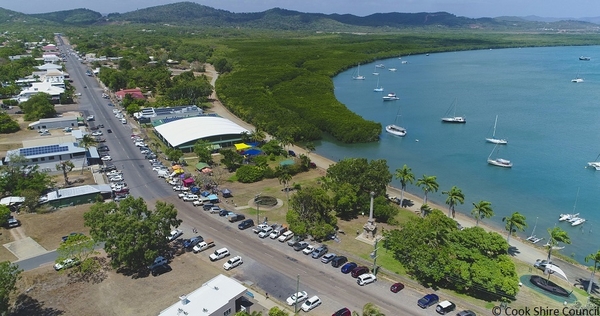 When in a town named after British navigator Captain James Cook, it makes sense to visit the museum that records this chapter of Australian history. Cook stopped here in 1770 to repair his ship, Endeavour, after it was holed on the reef. The James Cook Museum (entry fee $18) is housed in an 1888 building and its displays include the original anchor and a cannon salvaged from Cook’s ship. There are also exhibits on the gold rush period which saw Cooktown prosper between 1873 and 1890.
When in a town named after British navigator Captain James Cook, it makes sense to visit the museum that records this chapter of Australian history. Cook stopped here in 1770 to repair his ship, Endeavour, after it was holed on the reef. The James Cook Museum (entry fee $18) is housed in an 1888 building and its displays include the original anchor and a cannon salvaged from Cook’s ship. There are also exhibits on the gold rush period which saw Cooktown prosper between 1873 and 1890. 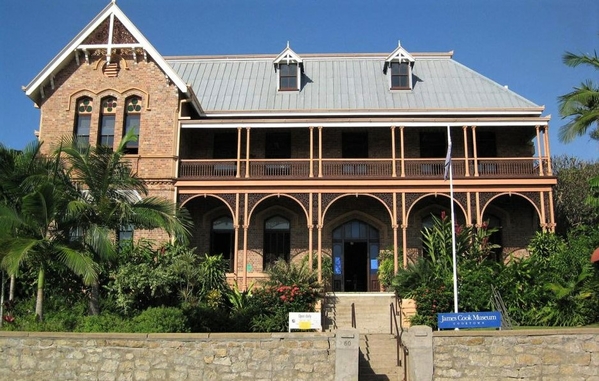 In town there are also historic buildings, a history centre, a botanic garden and five pubs in the main street. Splendid views are on offer from Grassy Hill lookout and other vantage points.
In town there are also historic buildings, a history centre, a botanic garden and five pubs in the main street. Splendid views are on offer from Grassy Hill lookout and other vantage points. 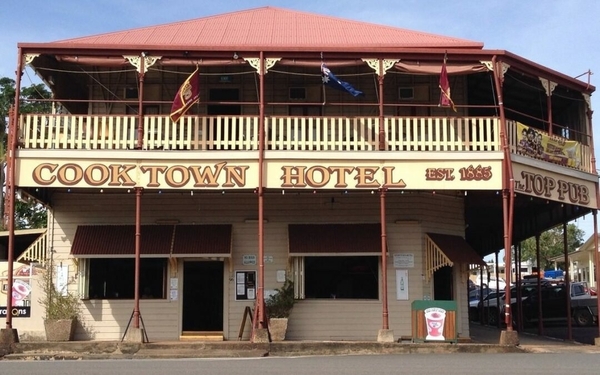
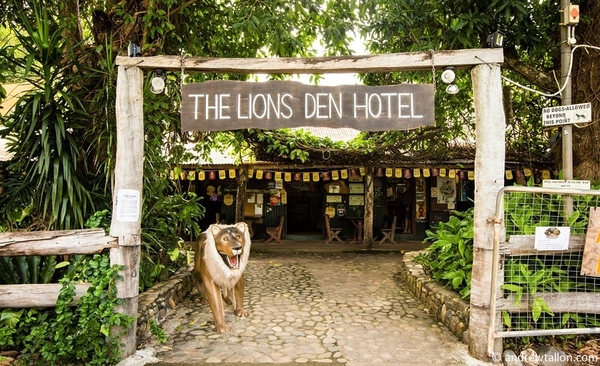
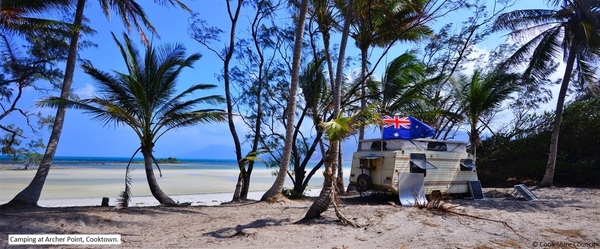 From Cooktown it is 330 km back to Cairns via the inland route. Don’t go back to Port Douglas, stay on Highway 81 as far as Mareeba and then take Highway 1 direct to Cairns. It will take you through the mountain village of Kuranda that I mentioned in the previous blog.
From Cooktown it is 330 km back to Cairns via the inland route. Don’t go back to Port Douglas, stay on Highway 81 as far as Mareeba and then take Highway 1 direct to Cairns. It will take you through the mountain village of Kuranda that I mentioned in the previous blog.
Or you can go on to the very tip of Cape York – the northernmost point of mainland Australia – where you can look out across the Torres Strait towards Papua New Guinea, just 150 km away. But you must have a 4WD vehicle and be prepared to drive a further 1,000 km or so over rugged terrain. 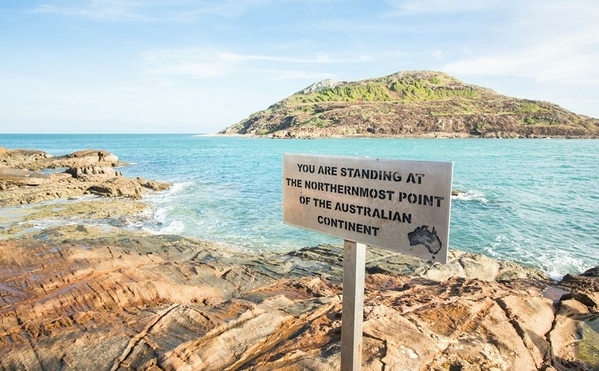
If all of the driving doesn’t appeal to you but you’d still like to get a glimpse of the region, you can take a helicopter flight departing from Cairns, Port Douglas or Mossman.

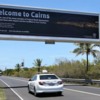

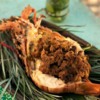

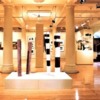
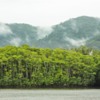


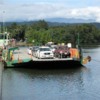


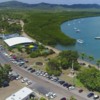
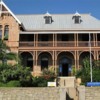
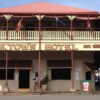
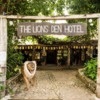
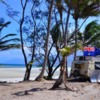
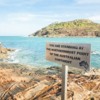
Comments (0)